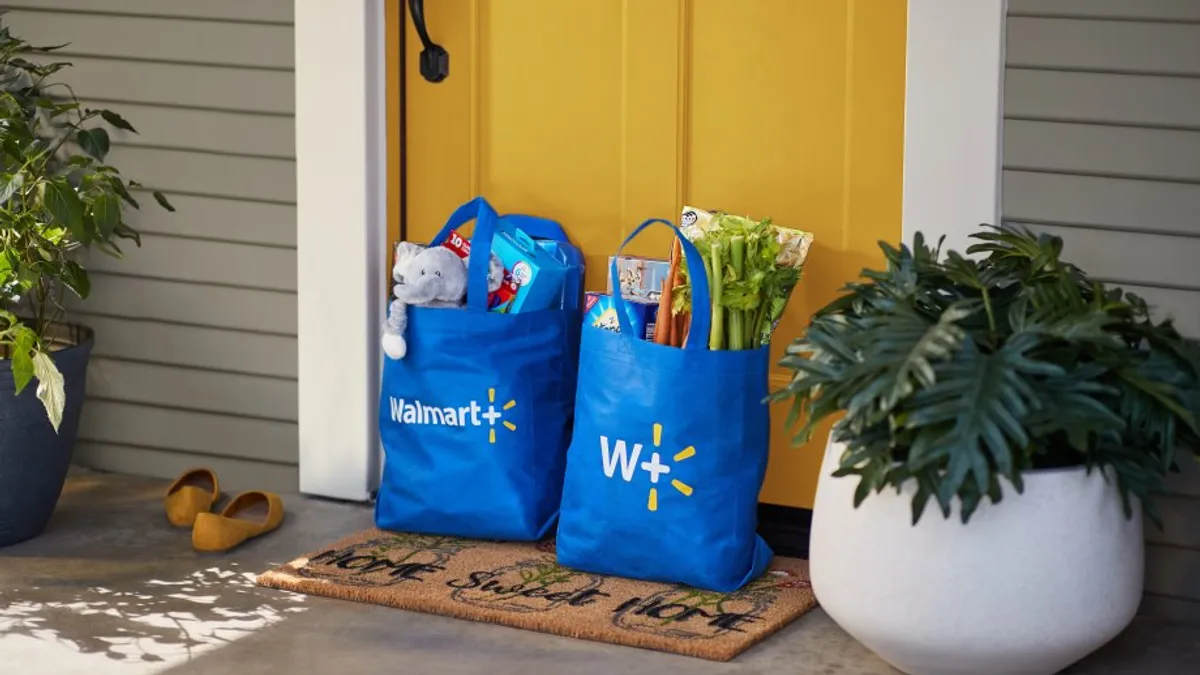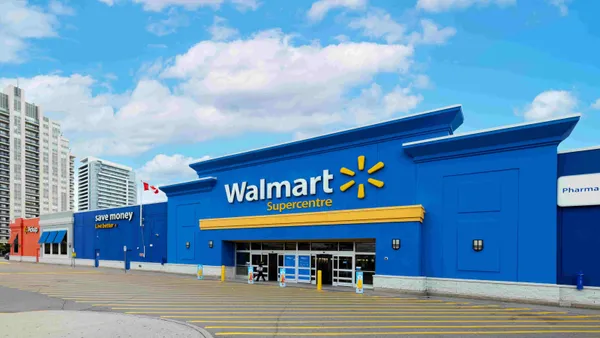Dive Brief:
- Walmart now offers same-day grocery delivery from 3,000 stores, according to a company announcement.
- To incentivize adoption, Walmart is waiving delivery fees for shoppers nationwide on three orders of at least $50 when they enter a special offer code. Walmart typically charges $7.95 or $9.95 for delivery, depending on the time of day.
- Walmart has nearly doubled the number of stores offering same-day delivery over the past year to meet pandemic-fueled demand and prepare for its Walmart+ membership service. Last summer saw the largest growth, with 850 stores adding delivery between May and September, according to media and company reports.
Dive Insight:
Up until last year, Walmart had focused its same-day e-commerce efforts on store pickup, which is now available from around 3,700 locations. But delivery became imperative during the pandemic, and the retailer put all of its operational muscle behind scaling the service.
Same-day delivery is also a key part of Walmart+, which launched in September. Shoppers who sign up for the $98-a-year membership program get unlimited no-fee deliveries on orders from stores over $35 along with other perks like fuel discounts and mobile scan-and-go.
Looking at the numbers, Walmart offered delivery from 1,600 stores as of last February. By September that figure had ballooned to around 2,700, according to media and company reports. Walmart’s same-day delivery service now reaches nearly 70% of the U.S. population, according to a LinkedIn post by Meng Chee, the company’s executive vice president and chief product officer.

As Walmart’s store delivery approaches parity with pickup, the company will be able to market increasingly flexible same-day fulfillment to its shoppers — a key to retaining loyalty as experts predict long-term sustained growth for online grocery shopping. These store-based e-commerce services also provide a potent weapon against Amazon, which maintains a fraction of Walmart’s store count.
Although Walmart has scaled delivery quickly, it hasn’t come without a few bumps in the road. The company relies heavily on last-mile services to complete its deliveries, and it’s had trouble holding onto these partners, with Uber, Lyft, Deliv and Skipcart having backed out of tie-ups with the retailer. Walmart declined to sign on with Instacart, the most popular third-party online grocery platform, until just recently.
The company also operates its own last-mile delivery service, Spark, that utilizes self-employed drivers in nearly 40 states.
Walmart’s grocery app, which is now integrated into the Walmart app, saw a record number of downloads early in the pandemic, and research shows millions of e-commerce shoppers have flocked to the retailer. Fifty-six percent of the more than 2,500 shoppers surveyed last summer by e-grocer Good Eggs reported using Walmart to order their groceries online — the most of any grocer.
The company is also investing in more efficient fulfillment, announcing last week plans to build “dozens” of automated micro-fulfillment centers in stores nationwide.













